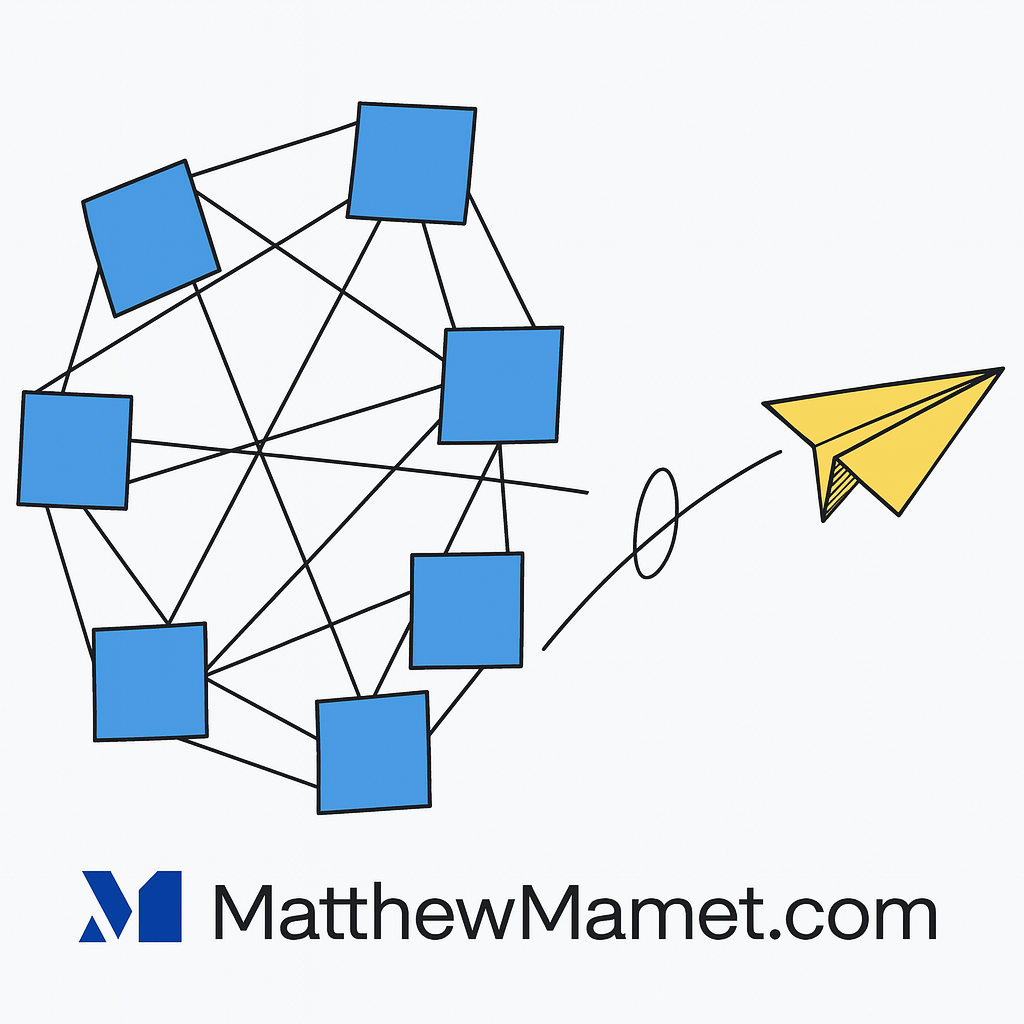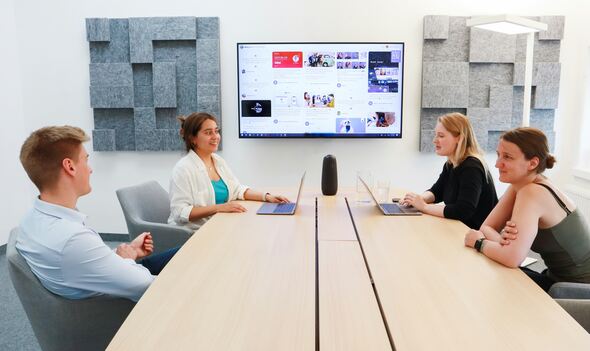Summary:
Technical founders often struggle with overthinking during the ideation phase, getting stuck in a cycle of endless possibilities and analysis paralysis. This pattern, common among builders, stems from treating every decision as irreversible. To break free, founders should focus on small, reversible experiments to gain real-world feedback and momentum. Emphasizing action over perfect planning, they can learn and adapt quickly, reducing the fear of failure. Coaching and accountability can provide the necessary push to move forward, transforming overthinking into productive execution.
Table of Contents
The Story: When Smart Founders Get Stuck Overthinking
Last week, I coached a technical founder who confided:
“I move fast and build fast, but the second I hit ideation, I’m a nightmare. I spin in circles. I get so deep into the possibilities that I stop moving forward.”
Sound familiar? This founder didn’t lack drive, brains, or work ethic. Just the opposite - they prided themselves on execution. But when it came time to decide which idea to pursue, they froze. Every choice felt massive. Every new brainstorm sent them back to zero. Days went by with nothing shipped.
I’ve seen this pattern for years with heads of product, CTOs, and strong builders. The myth goes: If I just think harder, I’ll find the “right” idea or the most bulletproof plan. But what actually happens is looping. Endless consideration. “What if” becomes the enemy of “what’s next.”
Let’s get practical about breaking the cycle.
Why the “Thinking Trap” Is So Common for Builders
There’s comfort in thinking. It feels like work - but it’s safer than picking a path and being “wrong.” When you live in analysis mode, you get dopamine from brainstorming, whiteboarding, mapping edge cases. You even get praise: “Wow, you think of everything!”
But here’s the reality: Most critical startup actions aren’t one-way doors.
One-Way vs. Two-Way Doors (And Why This Matters)
Jeff Bezos popularized this: A “one-way door” is a decision you can’t easily reverse. High stakes, big consequences. A “two-way door” can be walked through - or back out, if it’s not working.
Most founders treat every new product or positioning bet like a one-way door. In reality, shipping a new onboarding flow, running a marketing experiment, or putting a prototype in front of a customer is a two-way door. You can do it, learn, and adapt.
The key question to ask:
“What’s the actual cost if this flops? Is this reversible?”
If the answer is yes, you’re facing a two-way door. Try the thing, see what happens, then decide again.
Ready to drive more growth & achieve bigger impact?
Leverage my 25+ years of successes and failures to unlock your growth and achieve results you never thought possible.
Get StartedMake Progress with Small Experiments
You don’t have to bet the company to move. The fastest way out of the analysis loop is a bias toward action - tiny, cheap, ugly experiments.
Want proof that this works? Look at the Ubiqi Health journey. That team learned by doing, not pontificating. They built basic landing pages, ran paid tests, had sales calls with nothing but a pitch deck - and scrapped what didn’t stick.
What they didn’t do: Wait for a perfect plan.
How to Shrink the Risk
- Prototype, don’t productize: Don’t build a full feature. Build the ugly MVP or a clickable mockup.
- Talk to 5-10 customers: Don’t obsess over survey design. Just get on calls.
- Send the email/cold message: See who replies.
- Put up a fake landing page: Run $50 in ads.
- A/B test the copy with no backend built yet: Prove demand first.
Most leaders get stuck believing experiments must be “big enough to matter.” Reality: Small, pointed tests get you 80% confident - fast.
Spotting and Solving Analysis Paralysis
|
Where You’re Stuck |
Red Flag Behavior |
Two-Way Door Action |
What to Watch For |
|---|---|---|---|
|
Endlessly brainstorming |
Dozens of ideas, zero experiments |
Run a $100 landing page test |
Actual customer feedback |
|
Debating features |
Weeks of docs, no wireframe |
Prototype only one must-have workflow |
Real usage, not specs |
|
Obsessed with “messaging” |
Rewriting copy, never publishing |
Launch a new headline & see conversions |
Response, not opinion |
|
Fear of choosing wrong |
Delaying, polling everyone |
Commit to a rough plan for 2 weeks |
What you learn, not if it’s “right” |
Ready to drive more growth & achieve bigger impact?
Leverage my 25+ years of successes and failures to unlock your growth and achieve results you never thought possible.
Get StartedCoaching: The Shortcut Through the Loop
Founders are smart. But after a few reps of overthinking, your brain will tell you the same thing: Just think a little harder, and you’ll know for sure. That voice can be loud - and convincing.
Here’s where working with a coach or accountability group pays off. (Yes, I’m biased, but I see this every week.)
Coaching isn’t just pep talks or productivity frameworks. It’s about putting your assumptions under a microscope, then refusing to let you stay stuck. Sometimes it’s as simple as a coach saying:
“I heard your logic. Now what will you ship this week - the smallest version possible?”
Or having a peer text you, “Submit the demo, no edits.” That external nudge can break analysis inertia.
If you need structure, try group coaching or a recurring founder check-in. What matters is that someone else is tracking your bias for action, not just your latest brainstorm.
What Breaking the Loop Looks Like in Practice
I’ll give a real example (with permission): One coachee couldn’t choose between two customer segments to target. He’d mapped them both in excruciating detail - GAAP-sized market sizing models, side-by-side value props, user personas pinned all over the wall.
We reframed his problem as a two-way door. What could he do this week, for $200, to learn fast?
He sent out two tailored cold emails and lined up a dozen calls. Turned out, only one segment booked meetings and shared their pain points. Decision made. No endless debate, just feedback.
The same approach unlocked momentum for a product leader facing internal stalling: Instead of waiting for every stakeholder to sign off, they ran a quick user interview sprint and demoed the results. Let action teach you.
Ready to drive more growth & achieve bigger impact?
Leverage my 25+ years of successes and failures to unlock your growth and achieve results you never thought possible.
Get Started
Some founders worry: “If I’m always testing, will I miss the big vision?”
No. The big vision is built atop real-world evidence.
When should you slow down? If your experiment is truly irreversible, or changes your company’s DNA. Most strategic choices aren’t that. (If you’re not sure, this framework helps break down when to optimize vs. experiment.)
And when you realize you’re back in the loop? Take a breath. Ask yourself:
- Can I reverse this if it fails?
- What would a useful, fast experiment look like?
- Who can nudge me out of the weeds this time?
If you’re still not moving, get outside help - coach, group, or just an honest founder friend.
Your Escalation Plan When Stuck
|
Stuck Pattern |
First Move |
If Still Stuck |
Escalation |
|---|---|---|---|
|
Endlessly comparing options |
Run the smallest test |
Ship unfinished demo |
Text coach/peer for push |
|
Planning, never prototyping |
Build ugly wireframe |
User test in 48h |
Accountability group |
|
“What if” spirals overnight |
Decide on deadline, not perfection |
Schedule demo day |
External coaching |
Don’t Romanticize Analysis - Reward Action
In startup land, “thinking hard” gets glorified. “Smarter” founders, “better” frameworks, more edge cases. But execution always trumps the genius in the corner who never ships.
The next time you’re caught spinning, remember: Progress is a practice, not a mood. You don’t need perfect clarity, a team-offsite, or another brainstorm. Ship. Watch. Learn.
And find people who’ll remind you:
It’s almost always a two-way door - and the risk of not moving is higher than the risk of shipping most things.
Ready to drive more growth & achieve bigger impact?
Leverage my 25+ years of successes and failures to unlock your growth and achieve results you never thought possible.
Get StartedFinal Takeaway: Default to Movement - And Build the Reflex
If you want to go from thinker to doer, you need to build the bias for action until it’s a reflex. It doesn’t mean abandoning strategy; it means using reality to sharpen your thinking and your product, not just your pitch deck. Every founder I know who breaks out big started by breaking out small, fast, and ugly - then iterated with their eyes open.
So next time you see your calendar filling up with “what if” sessions, break the loop. Commit, ship the draft, launch the test, or just email that scrappy survey. As soon as you’re in motion, your brain and team will follow.
Want more on making decisions faster - and moving your team with clarity? You might want to check out “Accountability Is a Team Sport” next.
And if you’re in the weeds and can’t find the exit, grab a call with a coach, or simply ask a peer:
“What should I ship by Friday?”
You’ll feel that shift the minute you move.
Now - what small experiment are you avoiding right now? Why not try it, and see what opens up?
Ready to drive more growth & achieve bigger impact?
Leverage my 25+ years of successes and failures to unlock your growth and achieve results you never thought possible.
Get Started



